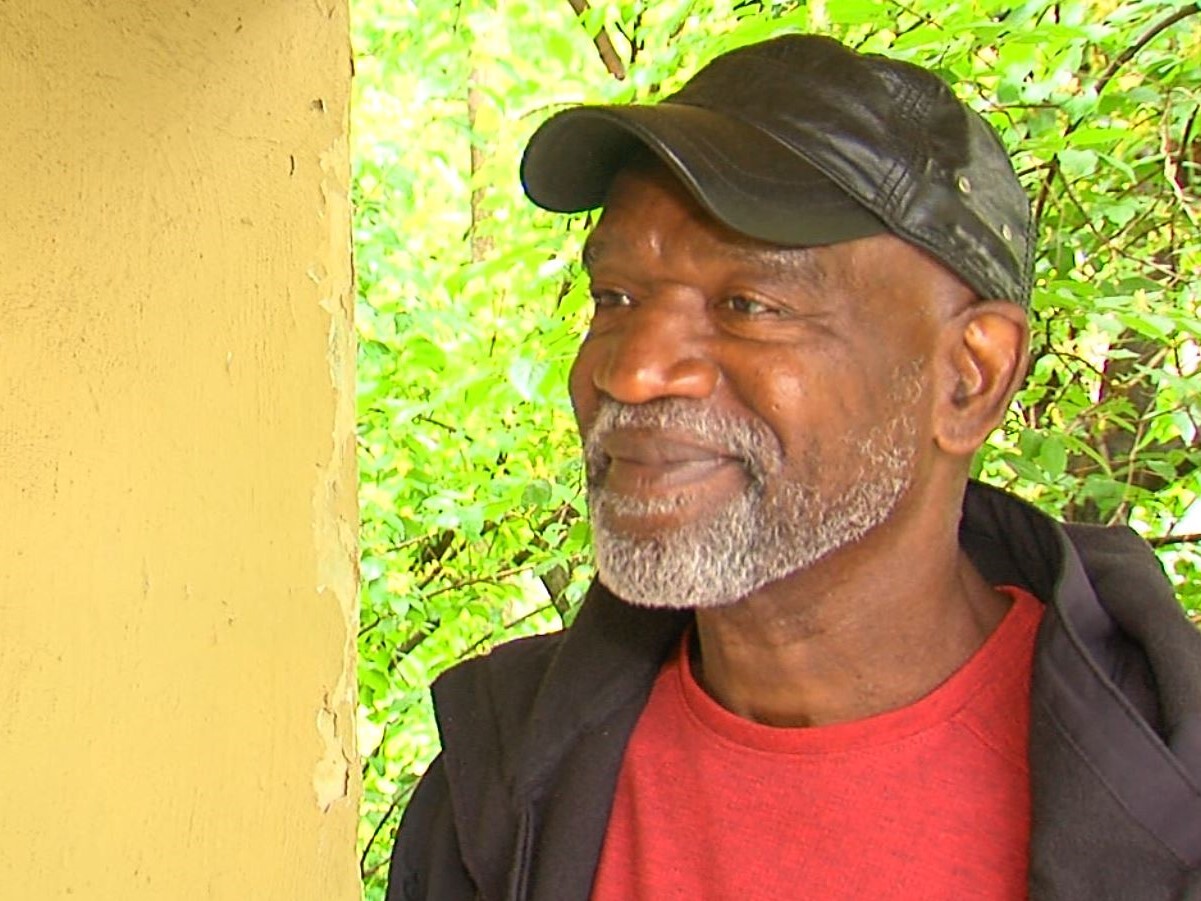LINCOLN HEIGHTS, Ohio — Daryl Daniels had a plan for his three-family rental property in Lincoln Heights that did not include falling property values.
“I was hoping by now to have enough money to reinvest and improve the property,” Daniels said. “That was the plan.”
But when he tried to refinance the Simmons Avenue investment property, the bank appraised it for less than half of the $88,000 he paid for it 17 years ago.

“The whole point was to invest in this community, try to improve the community, make sure the tenants were understood and taken care of,” he said. “That’s hard to do right now because the property value went down.”
Daniels is not alone, based on a new analysis of property value in 48 Hamilton County jurisdictions by Tom Carroll, village manager of Silverton. Carroll compared real estate values in the last five re-appraisals conducted by Hamilton County Auditor Dusty Rhodes’ office to see which communities recovered best from the 2008 recession.
Lincoln Heights ranked last in that analysis, with a 43% decline in property values when adjusted for inflation.
“Some parts of the county are unintentionally being left behind,” Carroll said. “These communities were built to house the office workers and factory workers from the 1950s and ‘60s, and many of those jobs are gone. So, as the middle class has shrunk, these working-class communities have started to experience a decline themselves.”
Reversing that decline is the focus of “Connecting the Dots,” a two-day virtual summit where experts in housing, economic development, government and social services will trade ideas on how to rebuild communities battered by foreclosures, corporate downsizing, the global pandemic and population shifts.
“These are very timely and pressing questions because of the crisis we’re in now,” said Elizabeth Kneebone, senior fellow at the Brookings Metropolitan Policy Program and co-author of the 2014 book “Confronting Suburban Poverty in America.”
‘We need to start thinking differently’
Kneebone said the coronavirus pandemic accelerated many of the poverty trends that already were impacting the so-called inner-ring suburbs that were the first to develop when U.S. cities grew outward from the urban core.
“In the American Rescue plan right now, there is $350 billion on the table for state and local investments in response to this downturn, so this is an opportunity again for communities who may have long been struggling,” she said.

Kneebone was struck by Carroll’s property value data because of how closely it correlated with suburban poverty trends.
RELATED: Can Tri-State suburbs help solve growing poverty problem?
“It was really striking to me the ones that hadn't even nominally recovered from 2008 all experienced, or almost all except for Indian Hill, almost all experienced some increase in the poverty rate,” Kneebone said. “Some of them quite substantial, like more than 20% poverty rates in the span of two decades.”
The decrease in property values and accompanying increase in poverty have left many suburban communities with less tax revenue to meet the basic needs of their residents, Carroll said.
“My perspective is really looking at it from the perspective of the local government and the local government’s ability to make ends meet,” he said. “And why is that important? That’s because we rely on those services — police, fire, roads, snow plowing, parks.”
Most local government officials have more problems than they can manage in a typical day, Carroll said, and that makes them reluctant to take on new challenges.
“We, traditionally, in Ohio at the local government level, we stay in our lane," he said. "And we do police and fire and roads and parks and those types of things, and that’s good and right. What’s new from the data analysis and what’s new because of the changing economic and social landscape is we as local governments need to be thinking about, 'How do we help our residents who are at or below the poverty line stabilize?'”

That must happen because of the clear connection between the financial wellbeing of residents and local governments’ budgetary challenges, Carroll said. That’s the message he hopes the “Connecting the Dots” virtual summit will drive home.
“We need to start thinking differently about it,” he said. “So even if it’s not in your heart, as a local government official, to be concerned about the poverty in your community, it should be in your head. Because I think you realize that your community’s fiscal health and your ability to serve the residents is a direct-line connection between the residents who are fiscally challenged and therefore unstable.”
Digging out of a 75-year-deep hole
Fiscal challenges are nothing new for Lincoln Heights.
The village has a population of 3,354, according to the latest Census estimates, and roughly 46% of all residents live below the federal poverty line.
The trouble dates to the village’s origins when Lincoln Heights incorporated in 1946. The village had tried to incorporate with a petition that included industrial land and the Wright Aeronautical plant, which eventually became GE Aviation. The company filed a formal protest against being annexed into Lincoln Heights. Community leaders went to court over the issue but did not prevail.

That left Lockland and its industry on one side of Lincoln Heights and Evendale and GE Aviation on the other.
RELATED: How young professionals are working to revive Lincoln Heights
“The action that occurred 75 years ago was not by the behaviors of the people who are currently around. It was 75 years ago,” said Joyce Powdrill, Lincoln Heights village manager. “But when you talk about earnings tax and payroll tax and you take and you carve out a large corporation into its own community, and you leave another community without that, you can see the difference. It’s quite obvious when you look at Evendale and compare Evendale to Lincoln Heights.”
“If you talk about the impact over the years, over 75 years, you start with a deficit, and you’re constantly trying to dig yourself out of a hole over a 75-year period," she said.

Powdrill and the Lincoln Heights council have a plan for getting out of that hole that includes more than 100 vacant lots the village now owns.
“When we had the economic downturn, there were a lot of homes that were left behind deteriorated,” she said.
Working toward a comeback
The village demolished scores of those properties and took ownership of the land, she said. That has eliminated the property taxes those homes once generated, but it also gives the village government control of what happens on the lots now.
“We’re working with the Port authority with a memorandum of understanding that we hope to execute shortly here as to how do we create residential houses on those lots,” Powdrill said. “When that happens, we start to increase the real estate tax.”
That’s one of a handful of strategies that Powdrill and village council members are pursuing to bring new investment, more residents and growth to the tiny village.
The troubles the village now faces come as no surprise to Daniels, who grew up in Lincoln Heights and watched with dismay over the years as storefronts disappeared and the Lincoln Heights School District merged into the Princeton City School District. He was in sixth grade at the time and still wonders how the village might be different if the 1970 merger hadn’t happened.

“It was a great neighborhood,” he said. “We loved the school system, a lot of pride in the community back then. You know, a lot of talent.”
Daniels showcased his talent as a Princeton High School running back, which led to an Indiana State University Scholarship and a 33-year career as a corporate safety professional. Daniels spent 20 years at Emery Chemicals and later formed his own consulting firm, CSP Safe LLC, which trains employees on Occupational Safety and Health standards.

He’s the father of Lincoln Heights Councilmember Daronce Daniels. His own father served as city auditor and vice mayor of Lincoln Heights. He’d like nothing more than to see his hometown stage a comeback.
“My Dad grew up here, born in 1927. His dad moved here from Georgia in the early 1900s. So, we’ve been a part of this community, my family, pretty much since it was a community,” he said. “I hear stories about my dad, he would always talk about how he’d have to walk his cow from down on Behles street all the way up to Sharon Road to mate with some other cow. So, we’ve been here for a long time. And I would love to be a part, or to have my family name be a part of the revitalization.”
He’s hopeful the local government’s plan will lead to better days.
“At some point, you have to reach the bottom and start coming back up,” Daniels said with a laugh. “That’s the point where we are now. We’re gonna turn the corner.”

More information about the Connecting the Dots Summit – including how to register – is available online. The summit will be held virtually May 26 and May 27. It is free and open to the public.
Dan Monk is an ITeam reporter for WCPO 9. To reach Dan, email him at daniel.monk@wcpo.com. Follow him on Twitter @DanMonk9.
Lucy May writes about the people, places and issues that define our region – to celebrate what makes the Tri-State great and shine a spotlight on problems we need to address. Poverty is an important focus for Lucy and for WCPO 9. To reach Lucy, email lucy.may@wcpo.com. Follow her on Twitter @LucyMayCincy.





